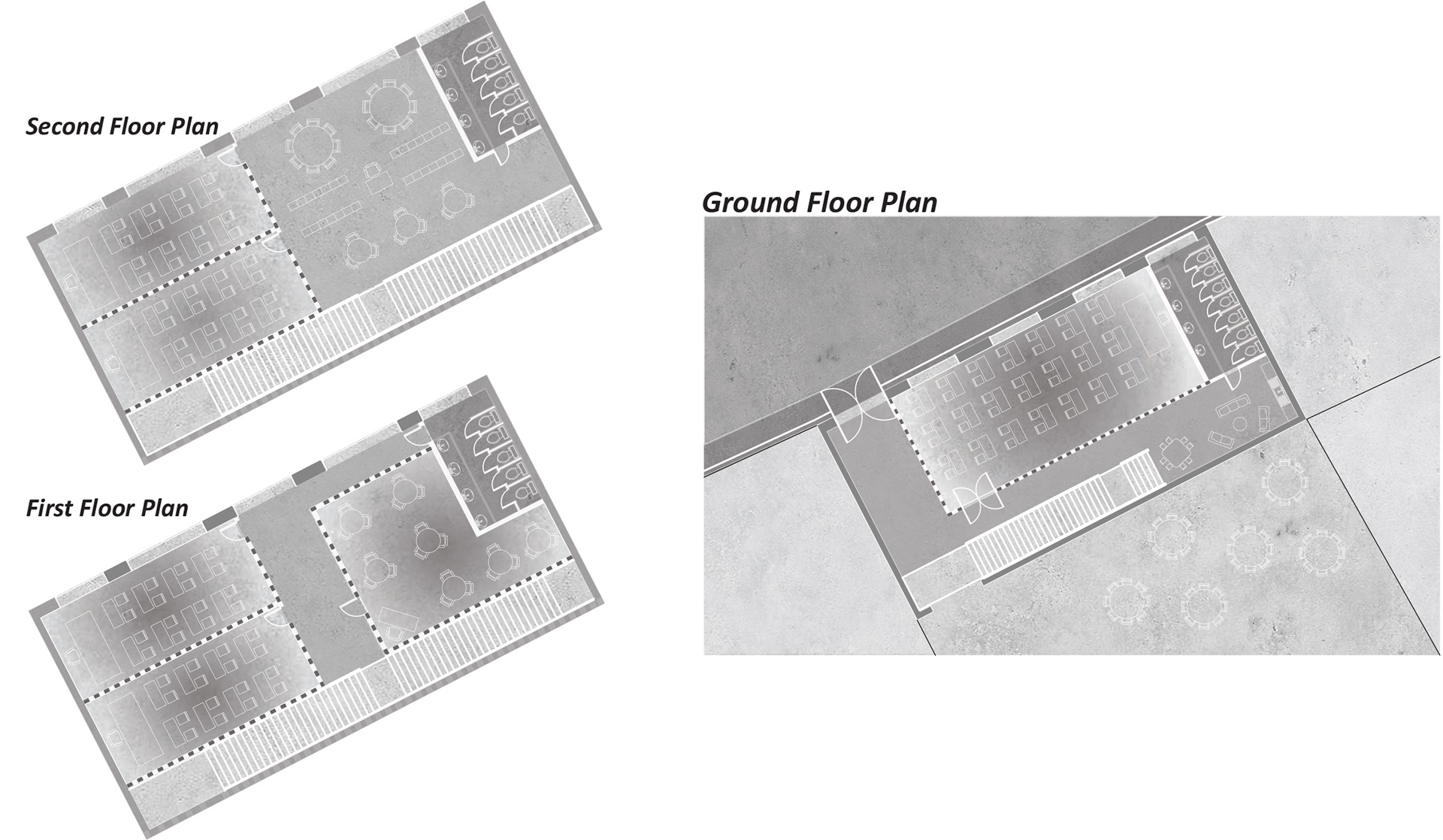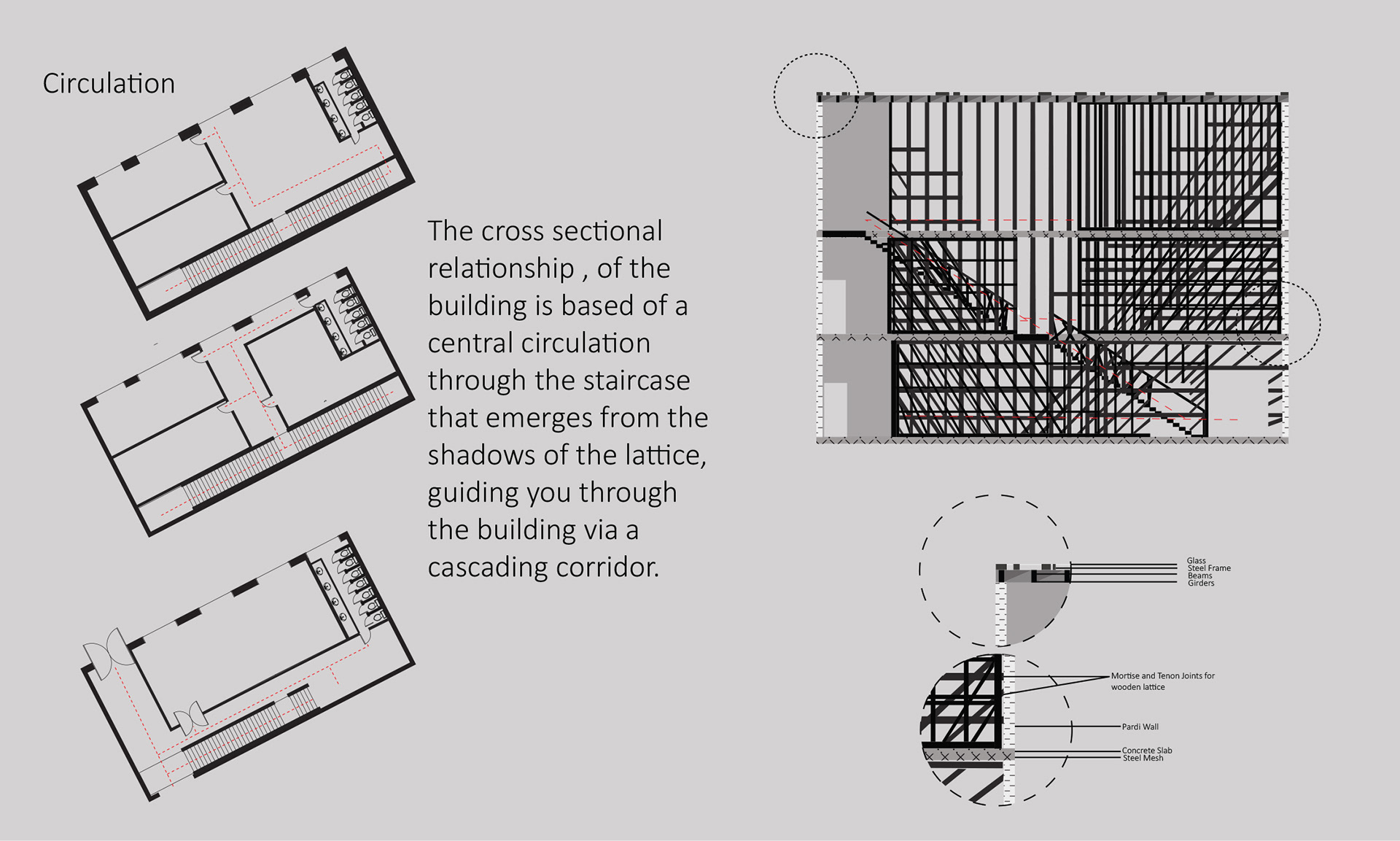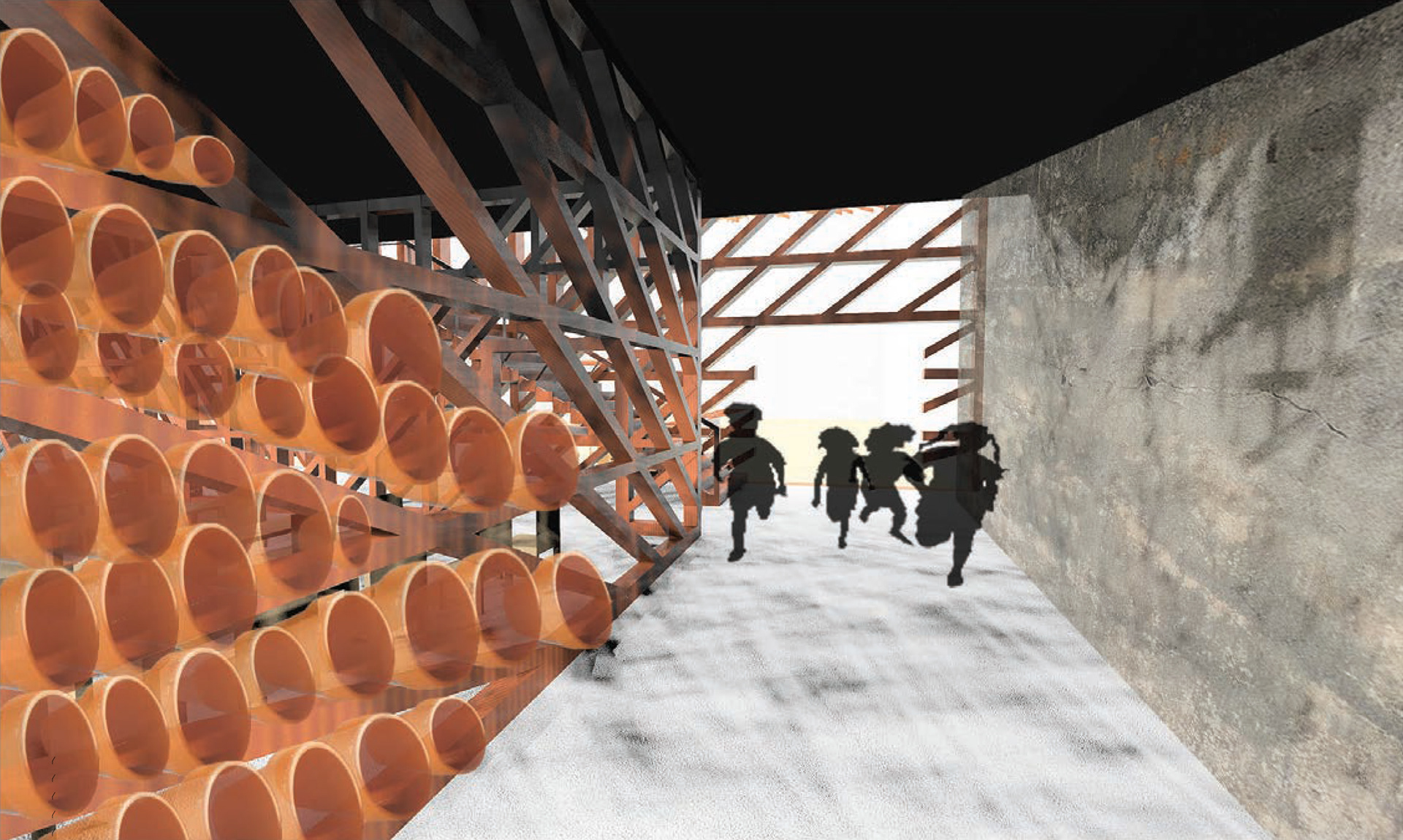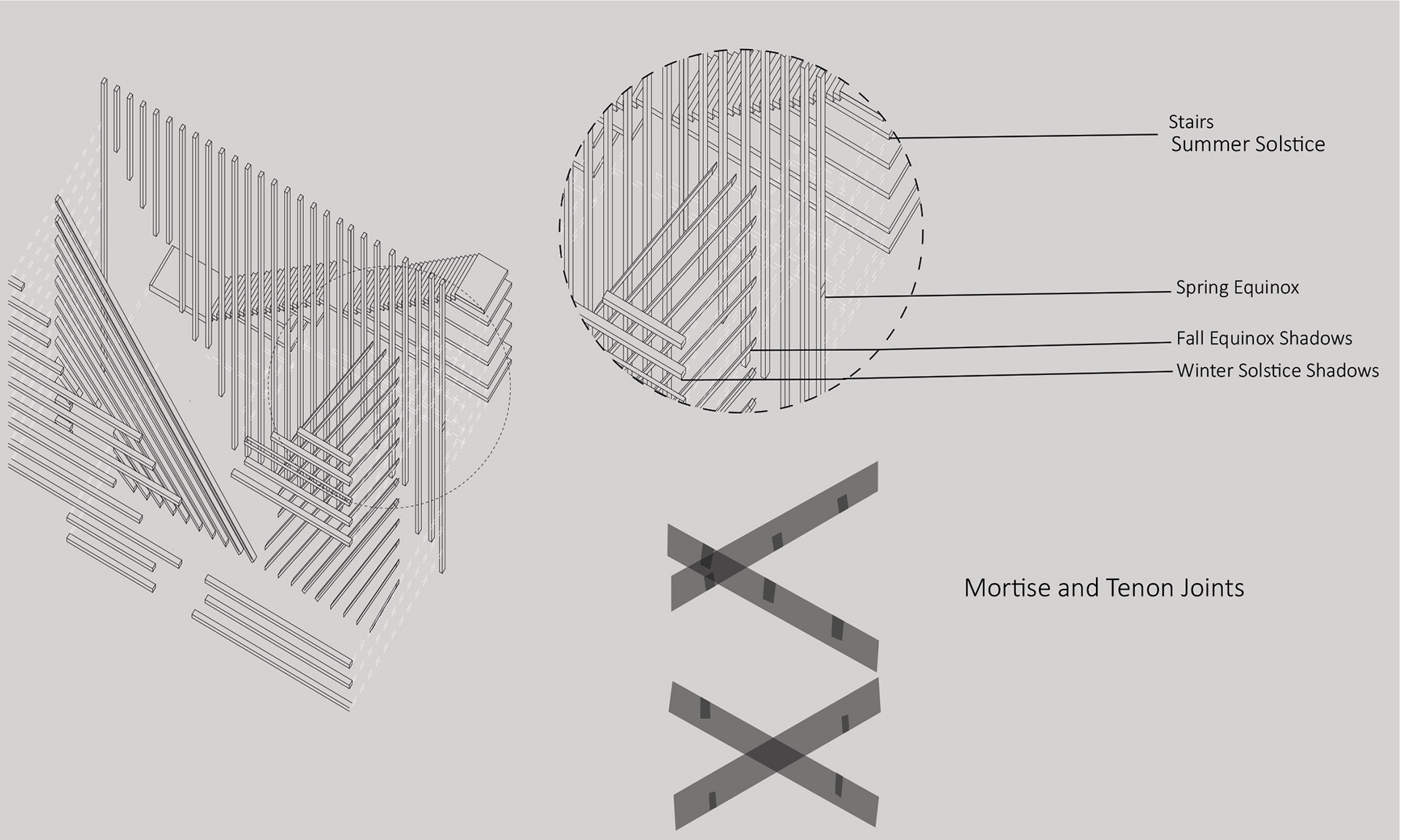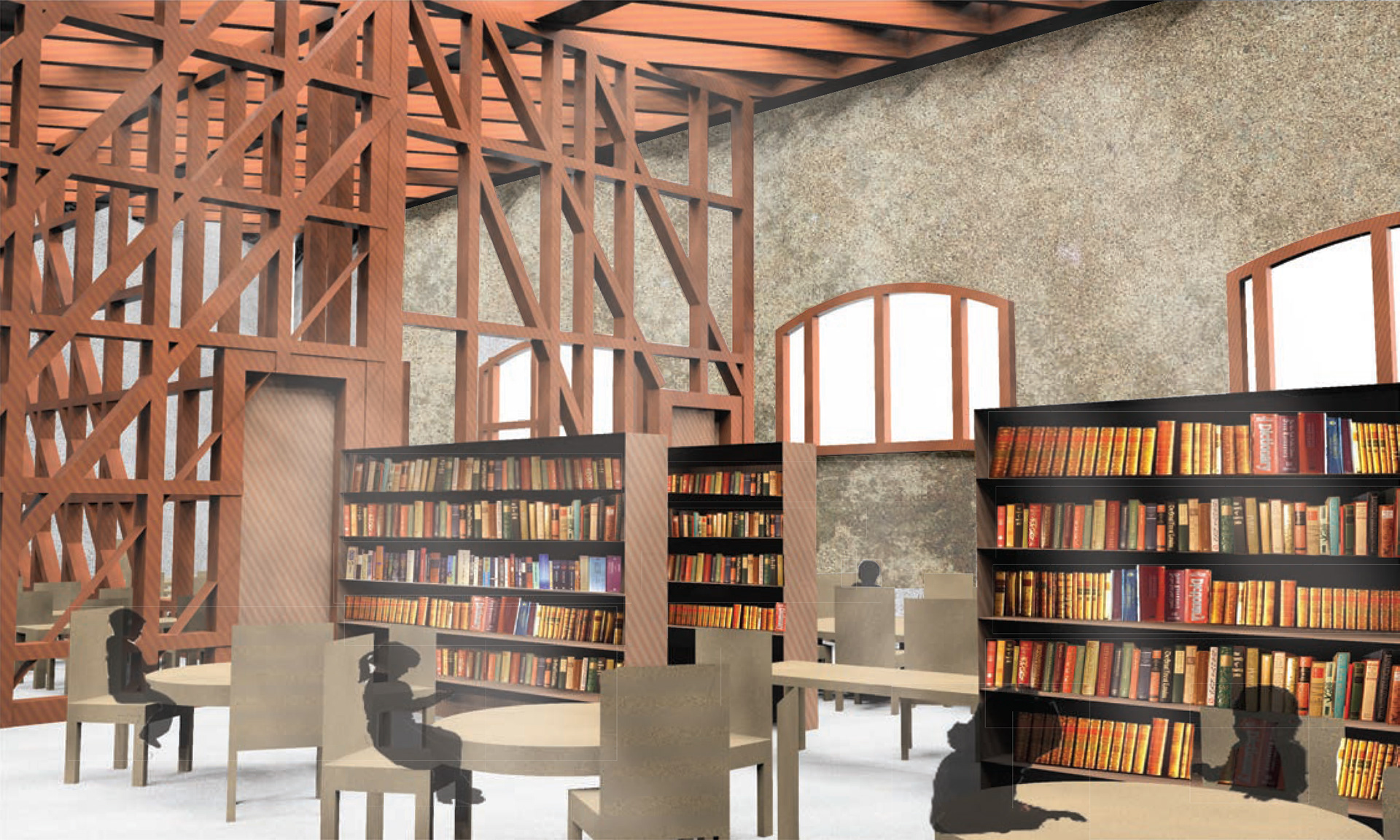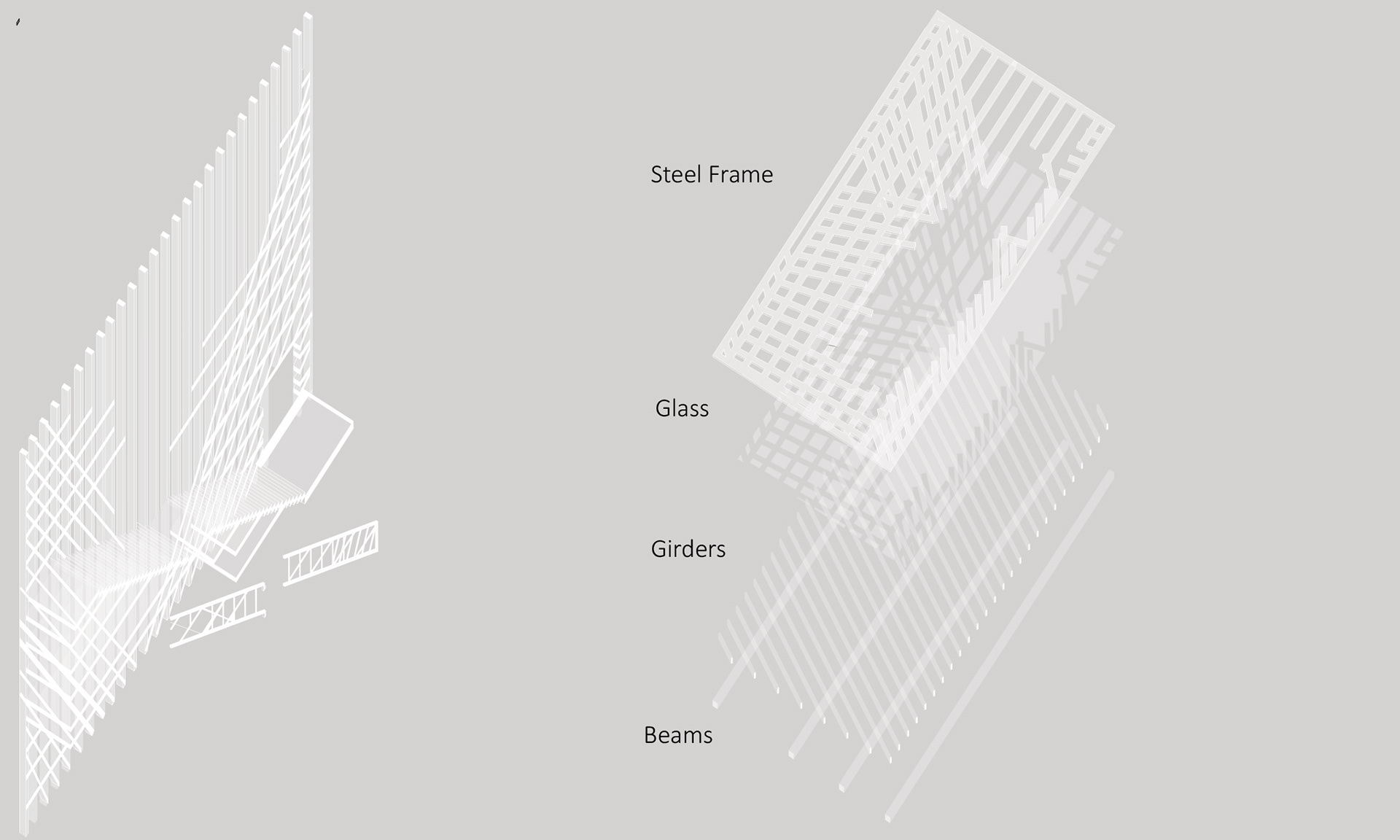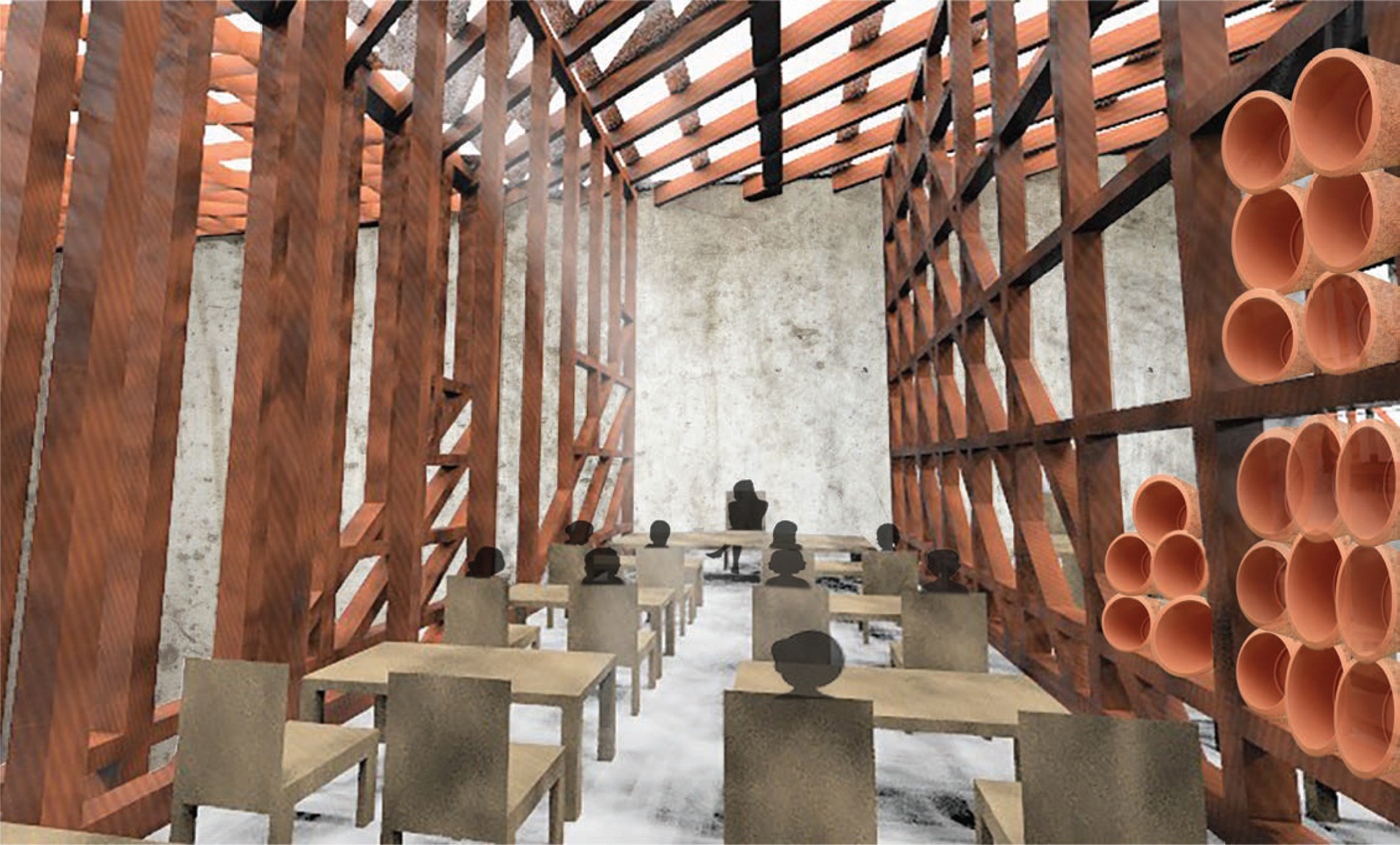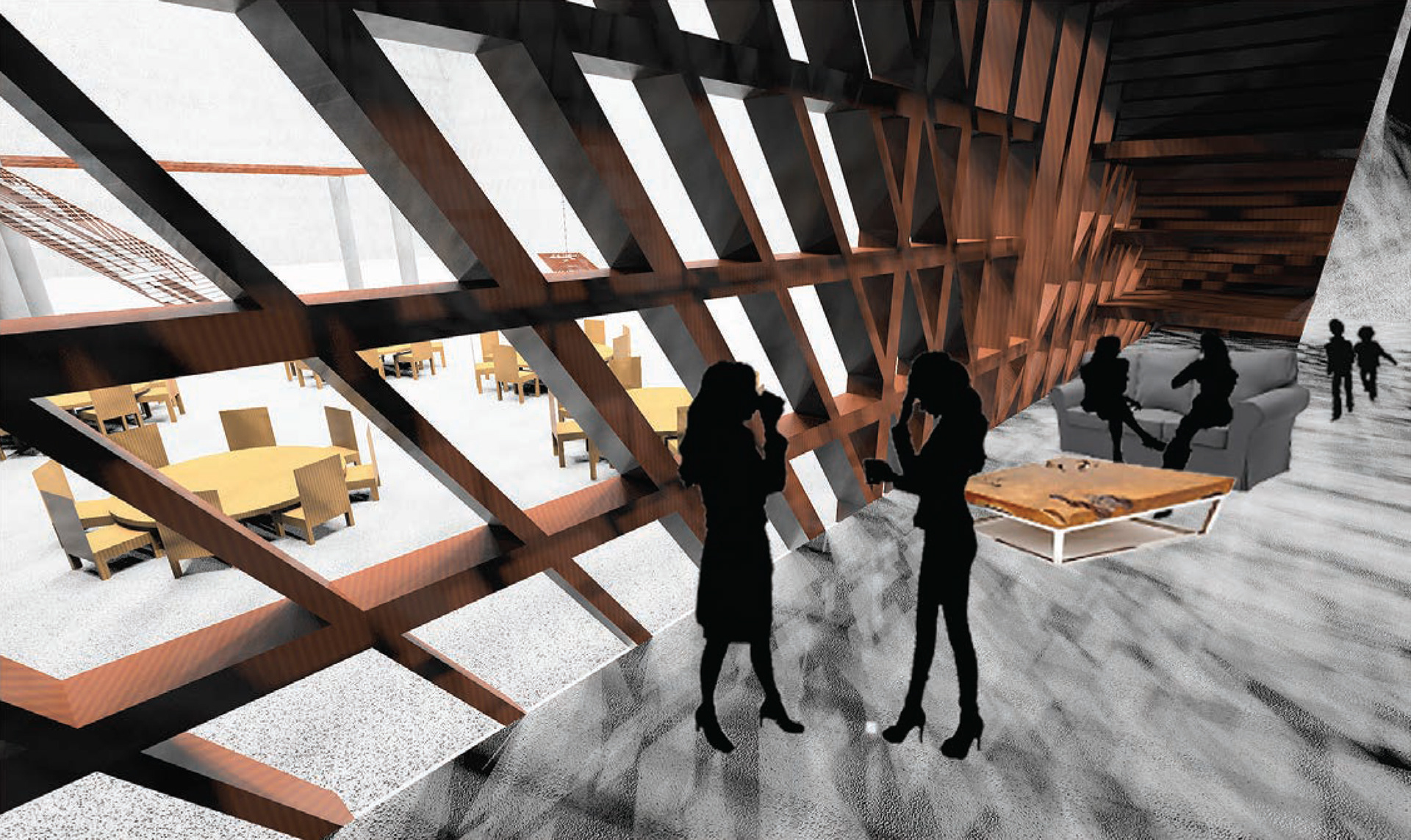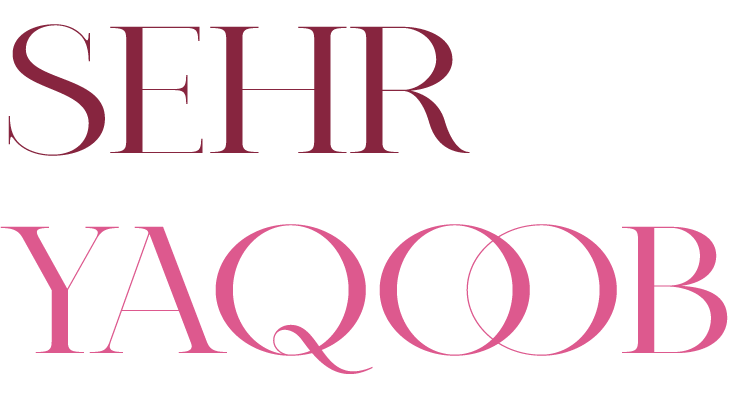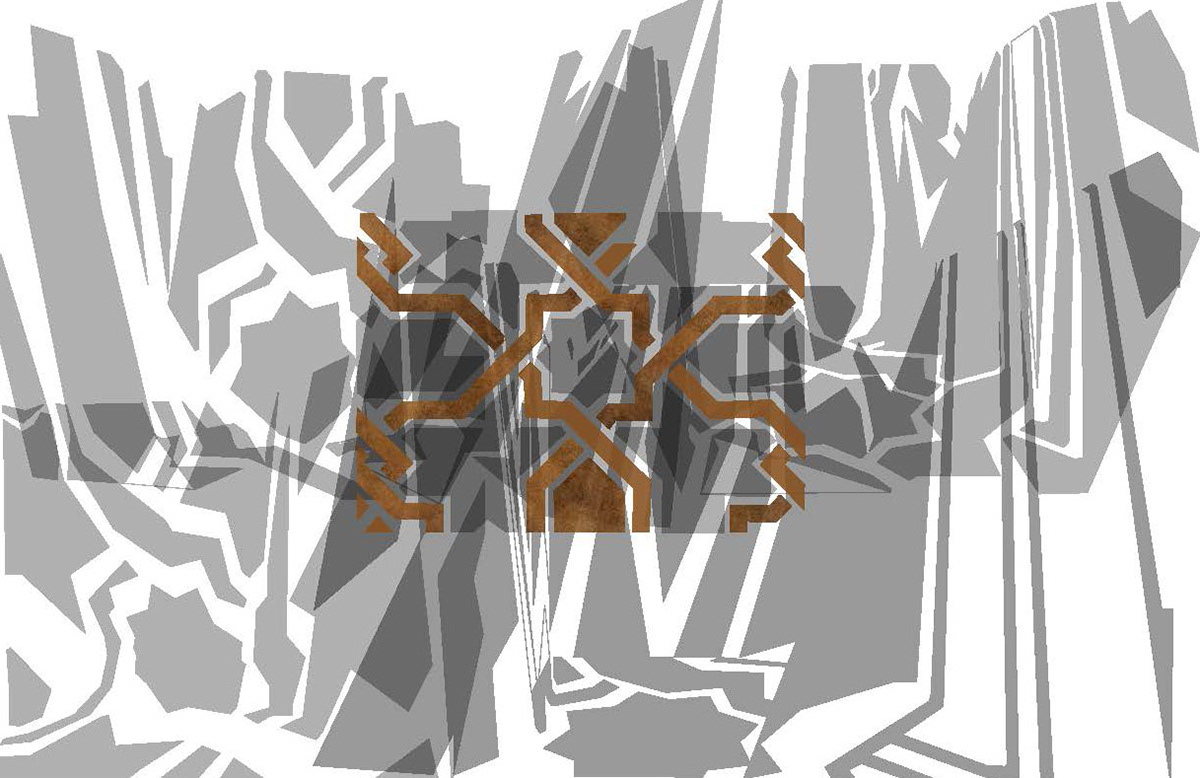
My interest in my thesis began a long time ago. Along the same time that I started loving architecture. Each time I entered an Islamic structure, I always noticed the tiny fragments of light piercing through the ornately carved windows. I found myself engulfed by those shadows, trying desperately to exist within them.
Therefore, when I chose my thesis topic I didn't look much further. I aimed to create that feeling of space within fragments of light and shadow. I initially started by mapping the vastness of a room and how it would be reflected in a shadow. I deeply studied how I could imprint those shadows, measure them and somehow find an algorithm with which to connect them together in order to create a structure. Sadly, the complex nature of the Mashrabiya got me nowhere.
Luckily, this was a point in my semester where I had to pick a site. This made me think about what I was truly trying to achieve. Yes, I had called my thesis the ‘Revival of Islamic Architecture’. But how was I doing that? And what was the true identity of an Islamic structure in an Islamic nation?
After assessing all these factors that I was trying to address with my intervention. I chose my site as the Jiha Building in my hometown of Karachi, Pakistan. Karachi was a city created by the British as a refugee camp for the Afghans. For years, the city had struggled with its true identity. At its heart Karachi is a cosmopolitan city, full of life. However, it is also marred by its “Islamic identity” which has always held it back. Therefore, I was determined to find a site that carried within itself the political instability that is present in this country while carrying remnants of Islamic architecture.
The Jiha building was constructed by the British to serve as living quarters for officers. It carries within it remnants of colonial and Islamic architecture. These colonizers left Pakistan with this dilemma of what its true identity really is. It was because of the British and their tyranny that Pakistan became a separate nation for “Muslims”. What many people fail to realize is that Pakistan was not created for the sole purpose of Islamic independence. It was not formed so that the country would just be for only one religion. Instead, it was intended to be a secular nation with a Muslim majority. This is what the true identity of Islam is, it preaches acceptance and coexistence .
Keeping this in mind, I set about trying to discover the best way to showcase the identity of Islam. I had initially wanted to recreate the magic of those ornate shadows that had once inspired me. Unfortunately, existing in them just meant that I was recreating the past. As time has passed the identity of Islam as a religion and its architecture has changed as well. Islamic structures are no longer majestic or ornate because that's not what their true identity is anymore.
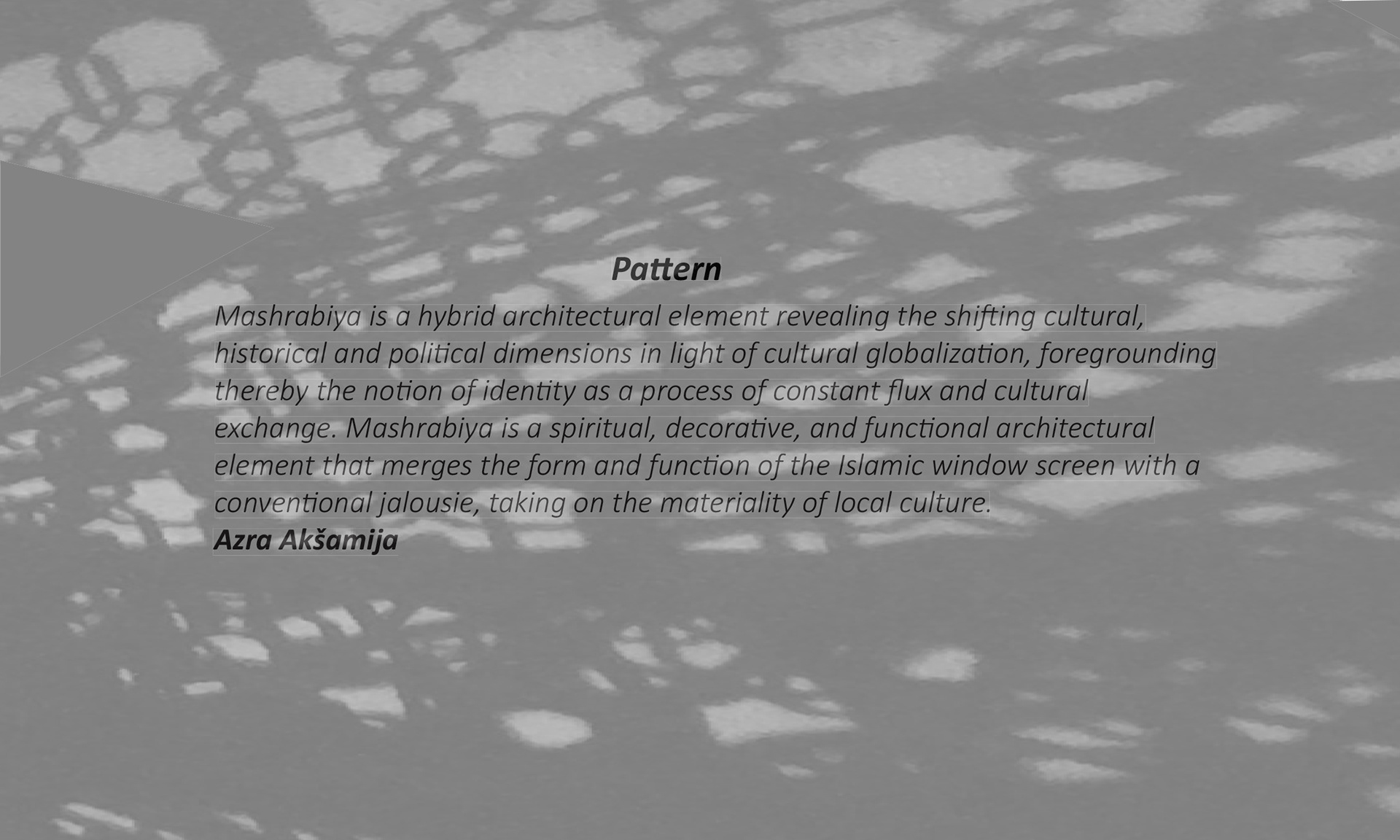
The model was created using slots for joinery. And an ascending height system , symbolising height as infinity. After creating the model I used light to reflect shadows from each side at different angles . Superimposing the shadows I was able to get four distinct images of positive and negative space created by light and shadow.
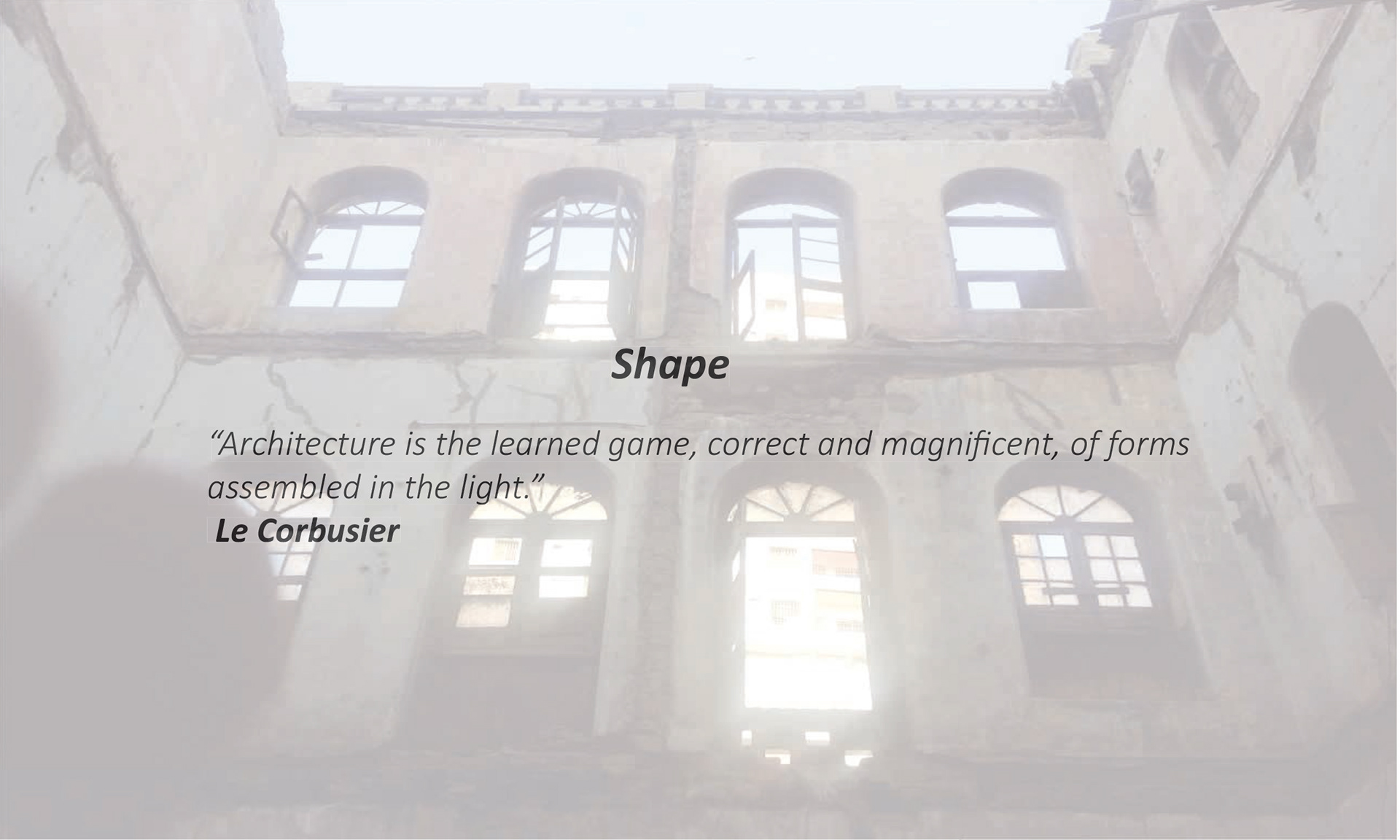

Jiha Building : Preedy Quarters
The post colonial history of Karachi was affected by conditions of decolonization. A modern city that expanded
on the pattern of colonial dual city. Karachi has initially conceived by the British as a garrison town where
troops and ammunition were to be stationed and transferred to Afghanistan.
The Preedy quarters was , a luxury part of the city , with living quarters for the British built in colonial architectural styles, however incorporating some elements of traditional Islamic architecture including the mashrabiya . My site in particular the Jiha Building was a hotel , or rest house for the British however at present it is being used as slum, as the back of the building now lies barren, using this as my initial site I reconstructed this structure using light and shadow by incorporating a mashrabiya constructed for this site.
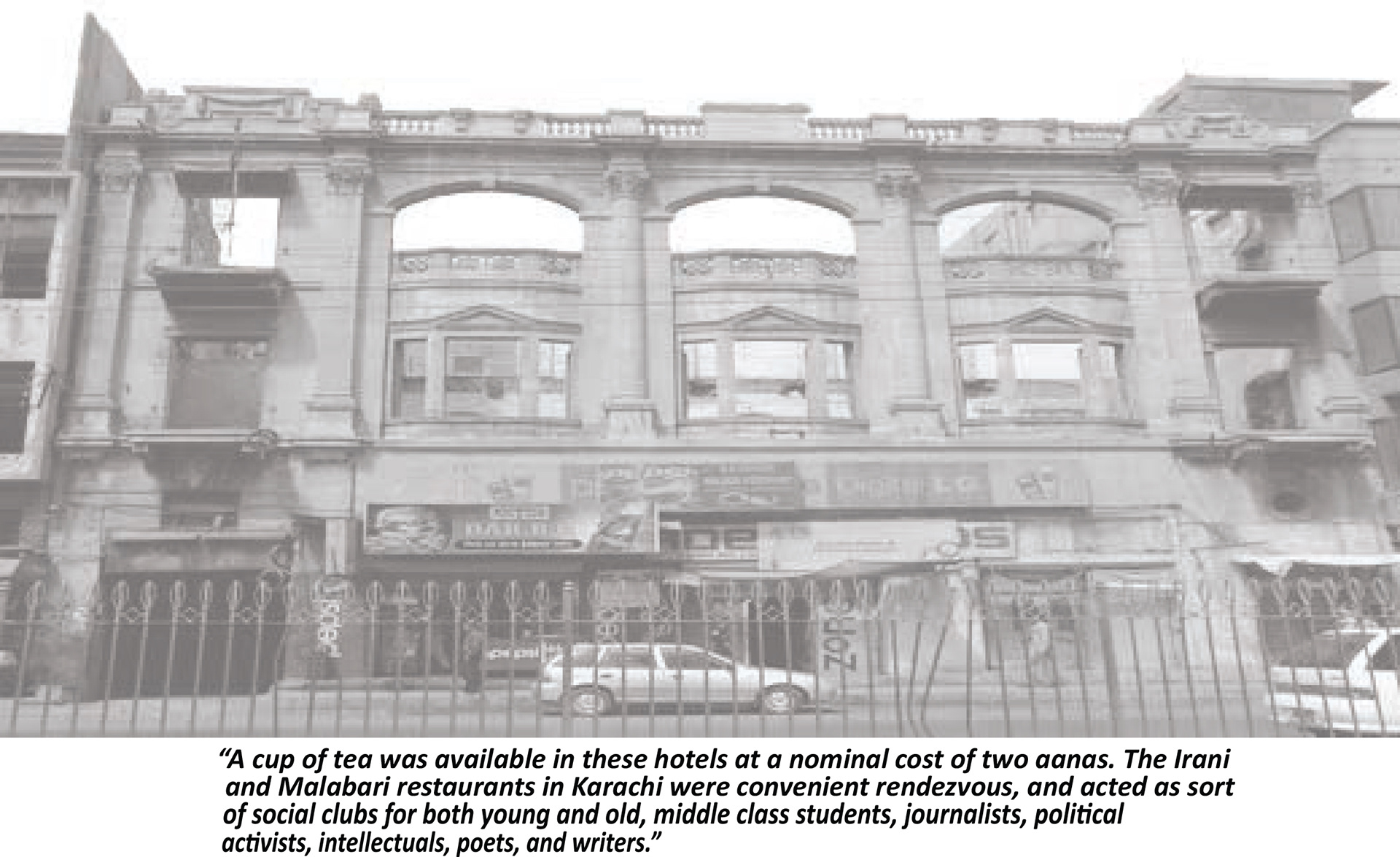
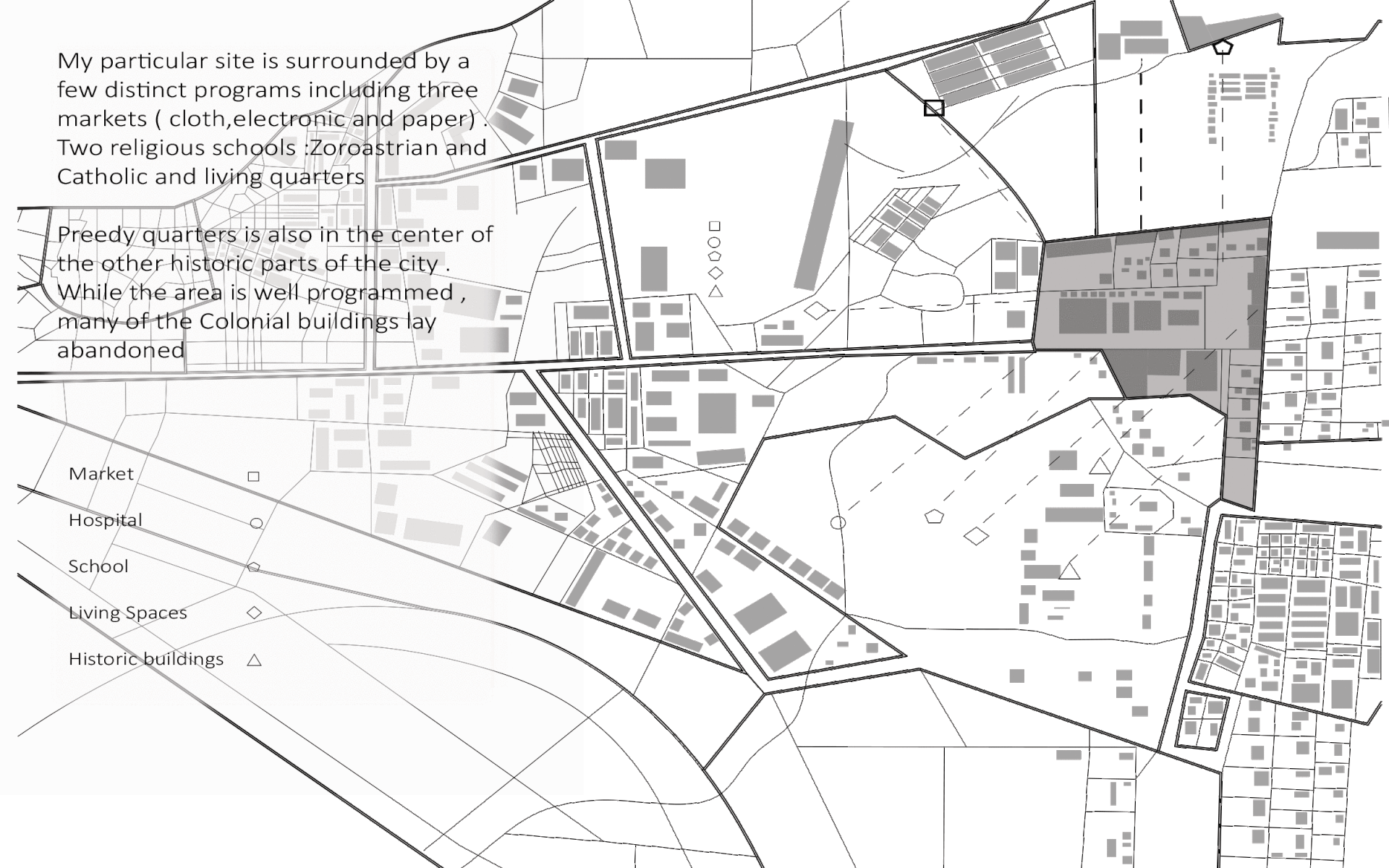

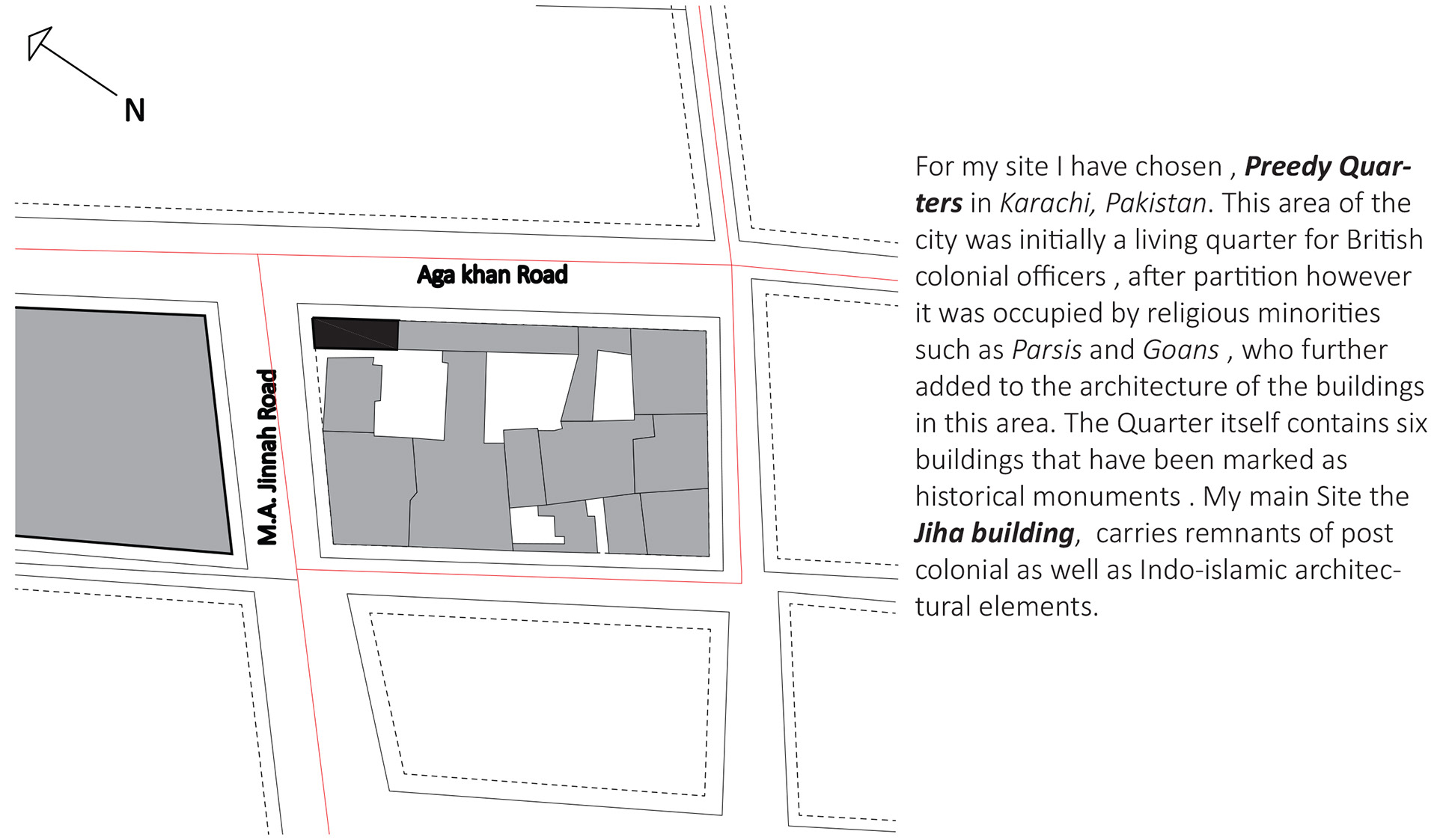
After Studying all the seasons , I used tonality to decipher the density of shadows at each time .Creating volumes by extruding the modules created.
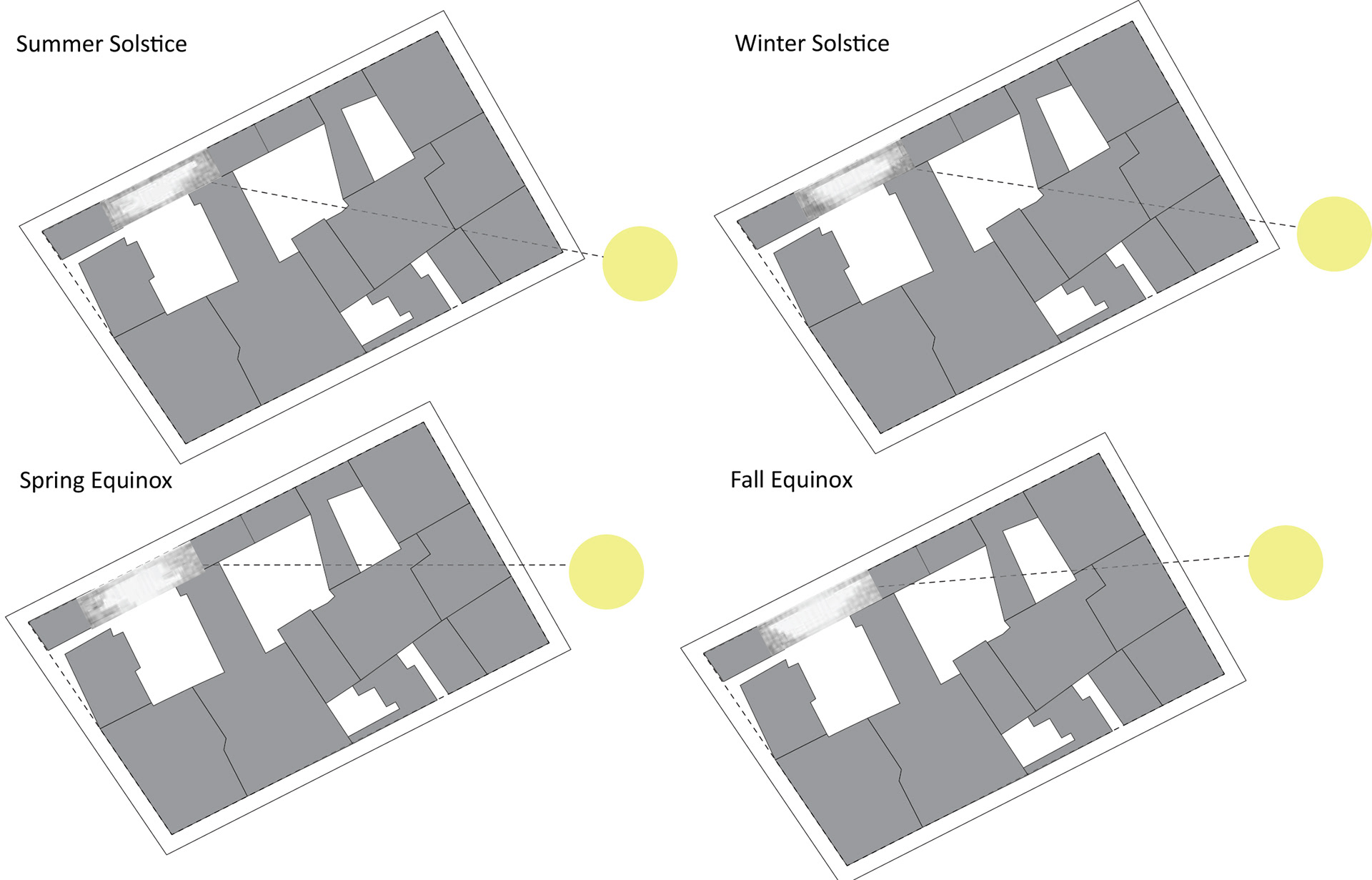
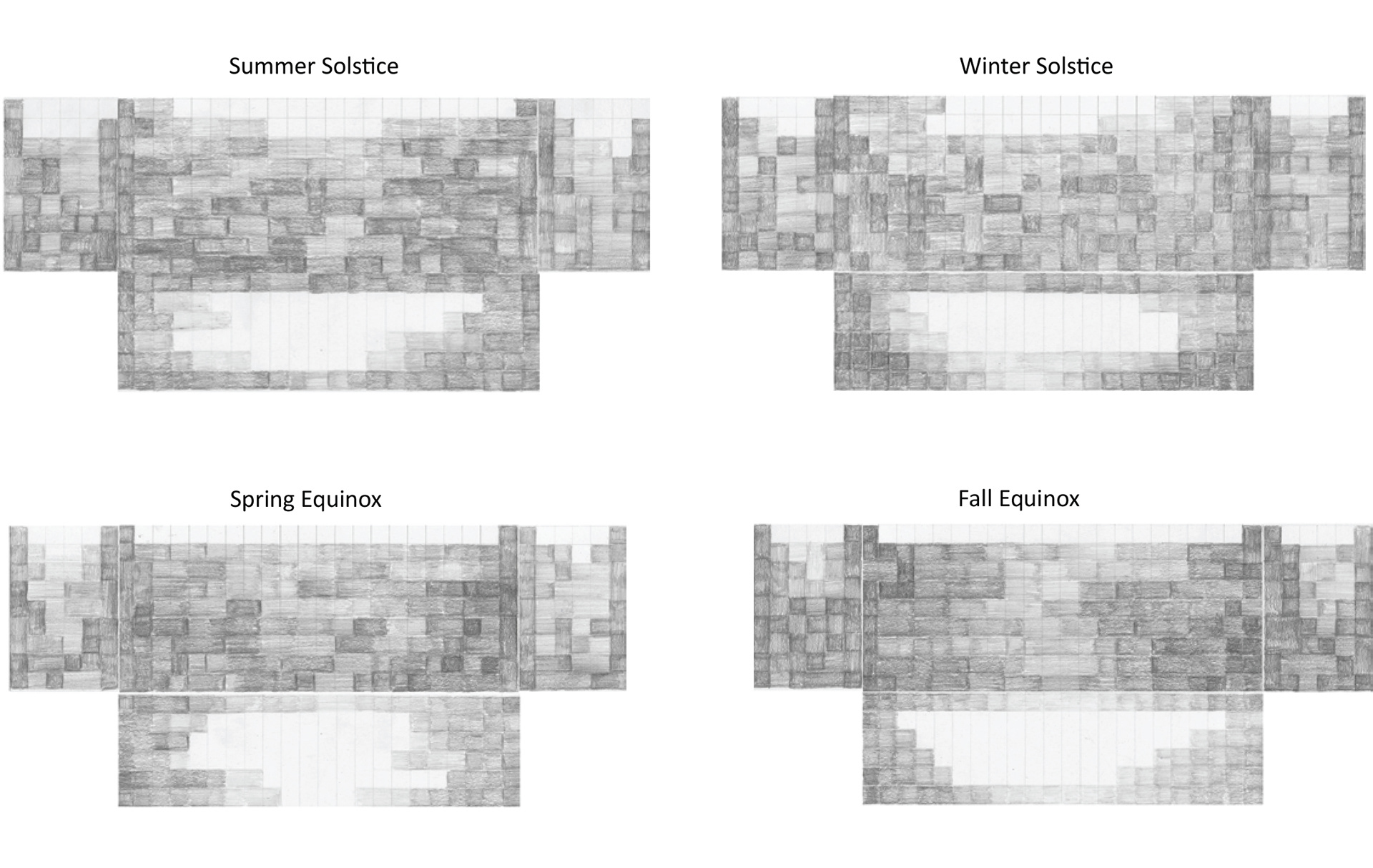
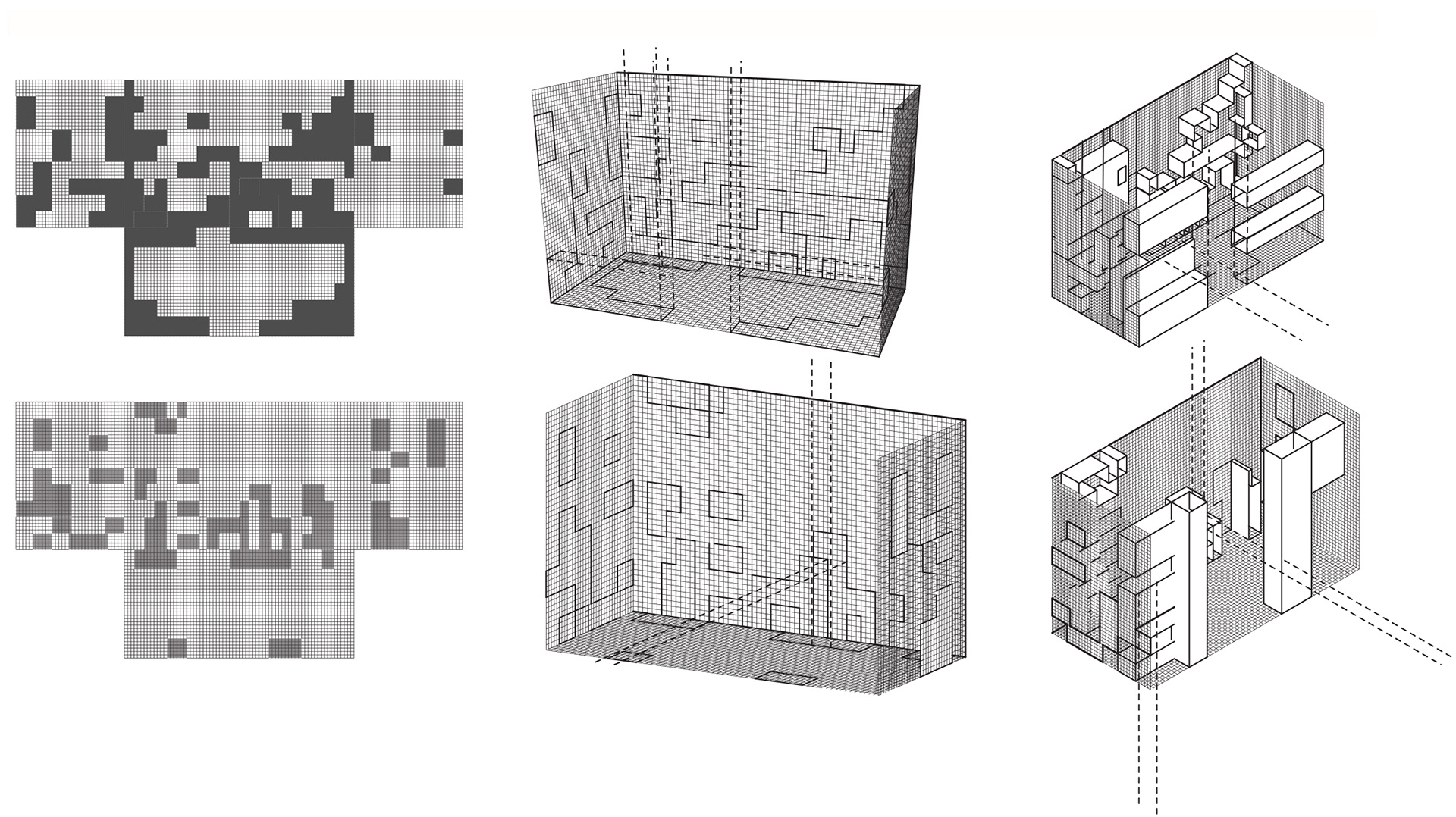
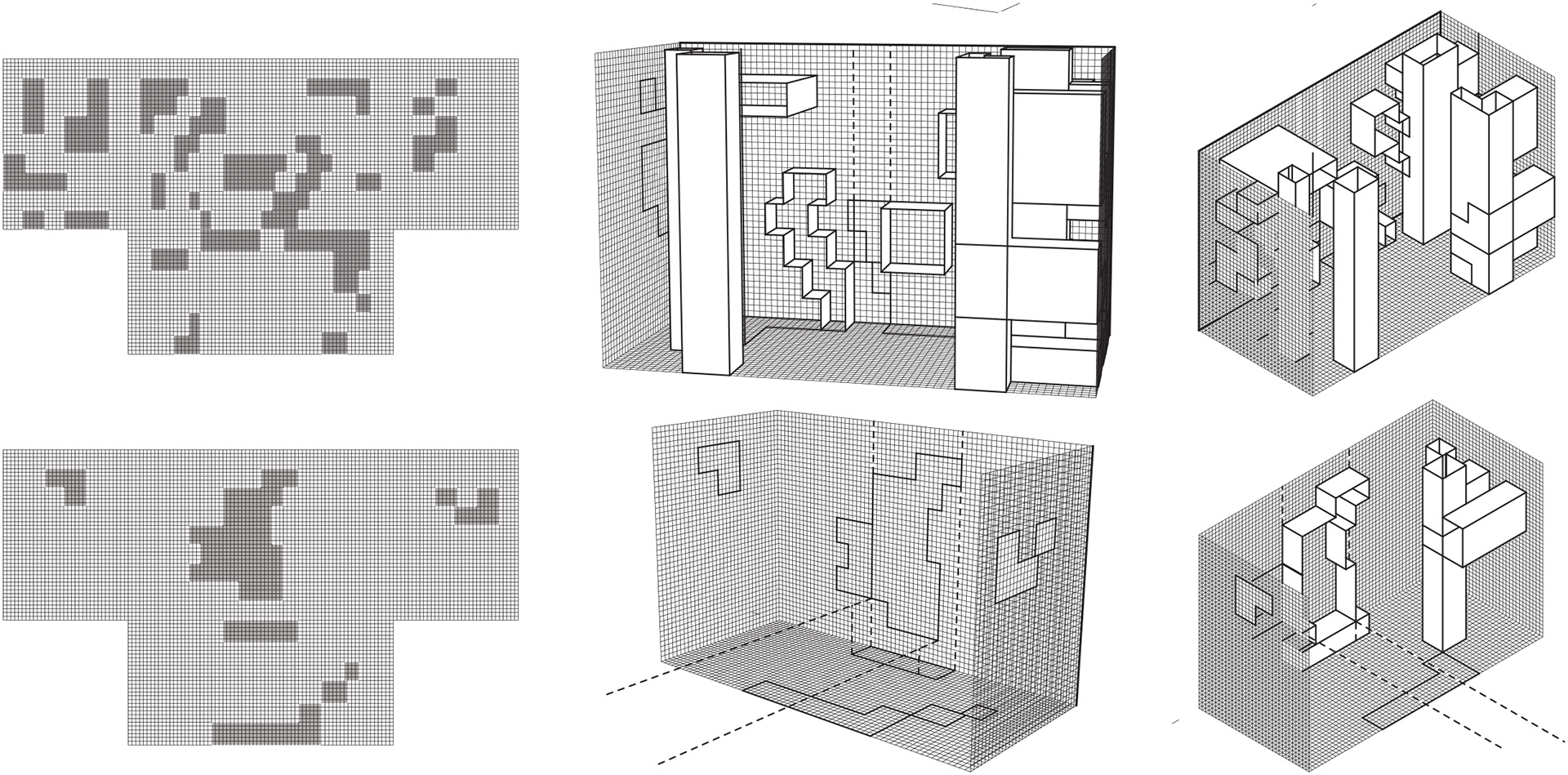


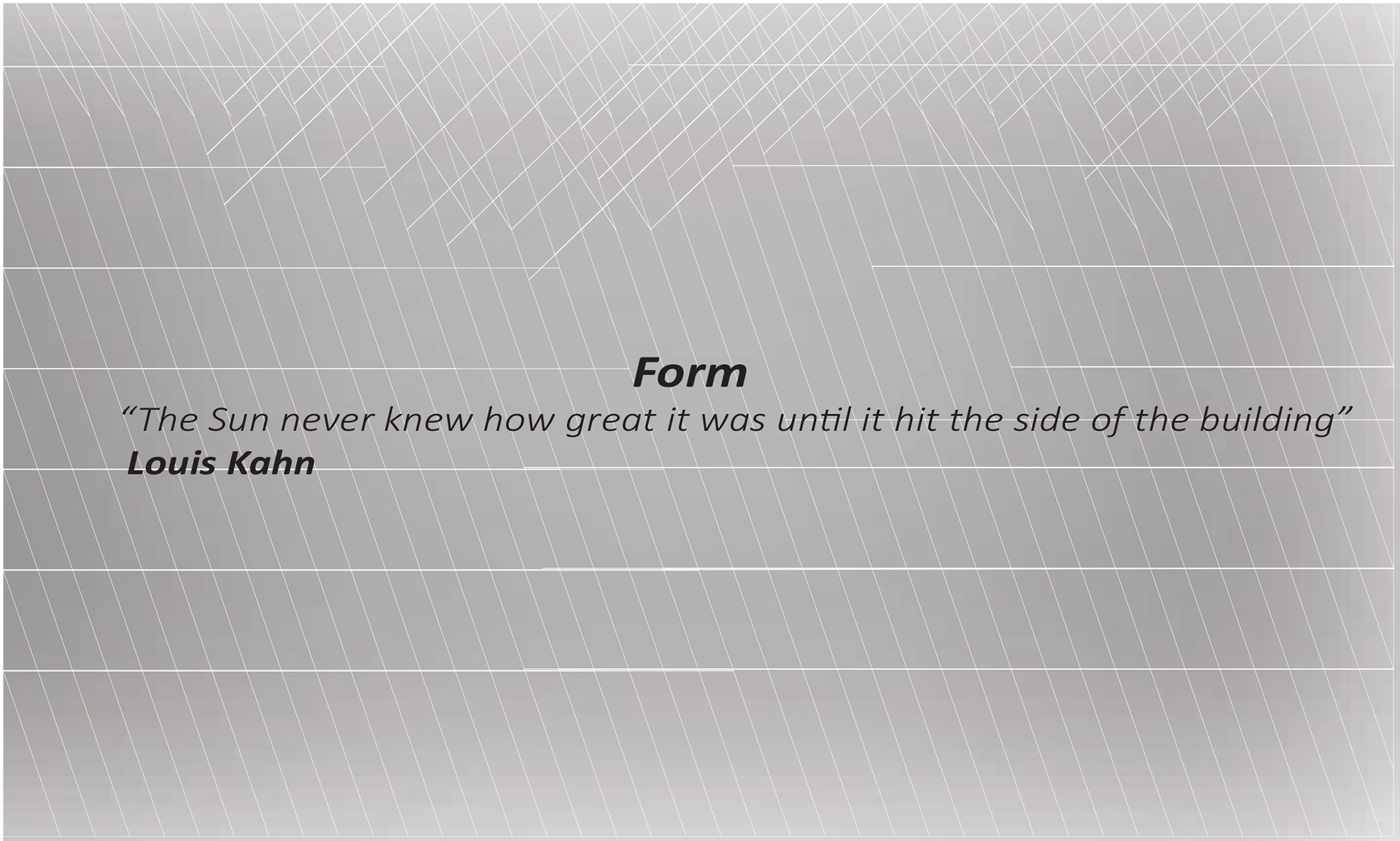
The Jiha building now stands hollow , just a facade, empty and abandoned . Just like the identity of what it represents. The British once were the rulers, the colonizers, however now they are seen as a symbol of hatred and exploitation.
With this mindset, I started studying the shadows of this structure but not with the intention of capturing them but instead with the aim of recreating them. It was the perfect site as the facade acted as my mashrabiya and the space within it as my experience. In doing so I came up with a study of line diagrams based on the four distinct seasons (Summer Solstice, Winter Solstice, Spring Equinox, Fall equinox). Each of which maps the sun directions and the direction in which the shadow is moving. I created my new lattice by interpolating the negatives and positives. A mashrabiya was used to disperse light and symbolise god within its geometry. My “mashrabiya” or lattice exists in the shadows. It no longer lets the sun decide which way the shadows move but captures the light within itself. Just like the Pakistanis did to free themselves from the colonizers. They discovered their true identity and took control.
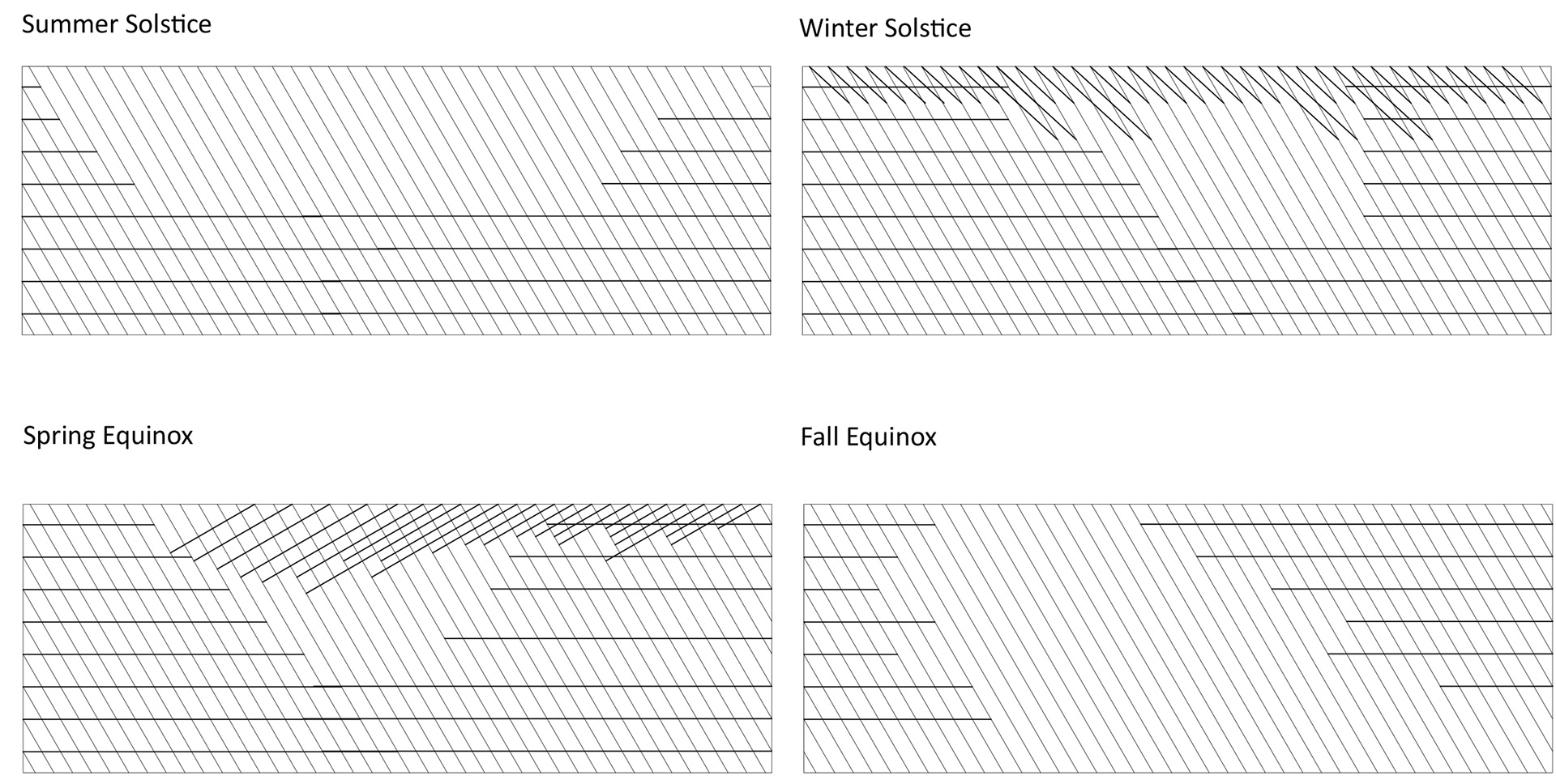
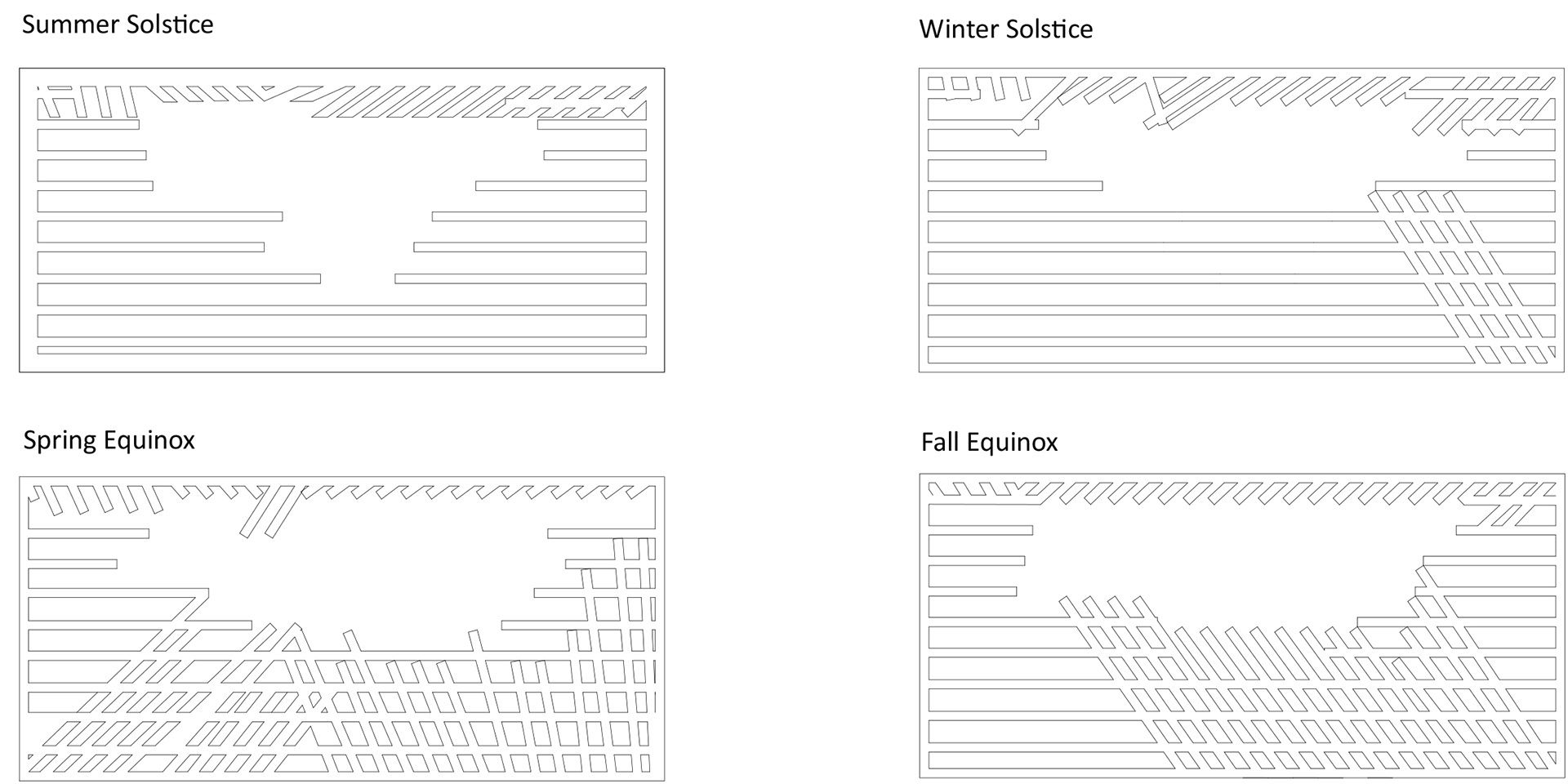

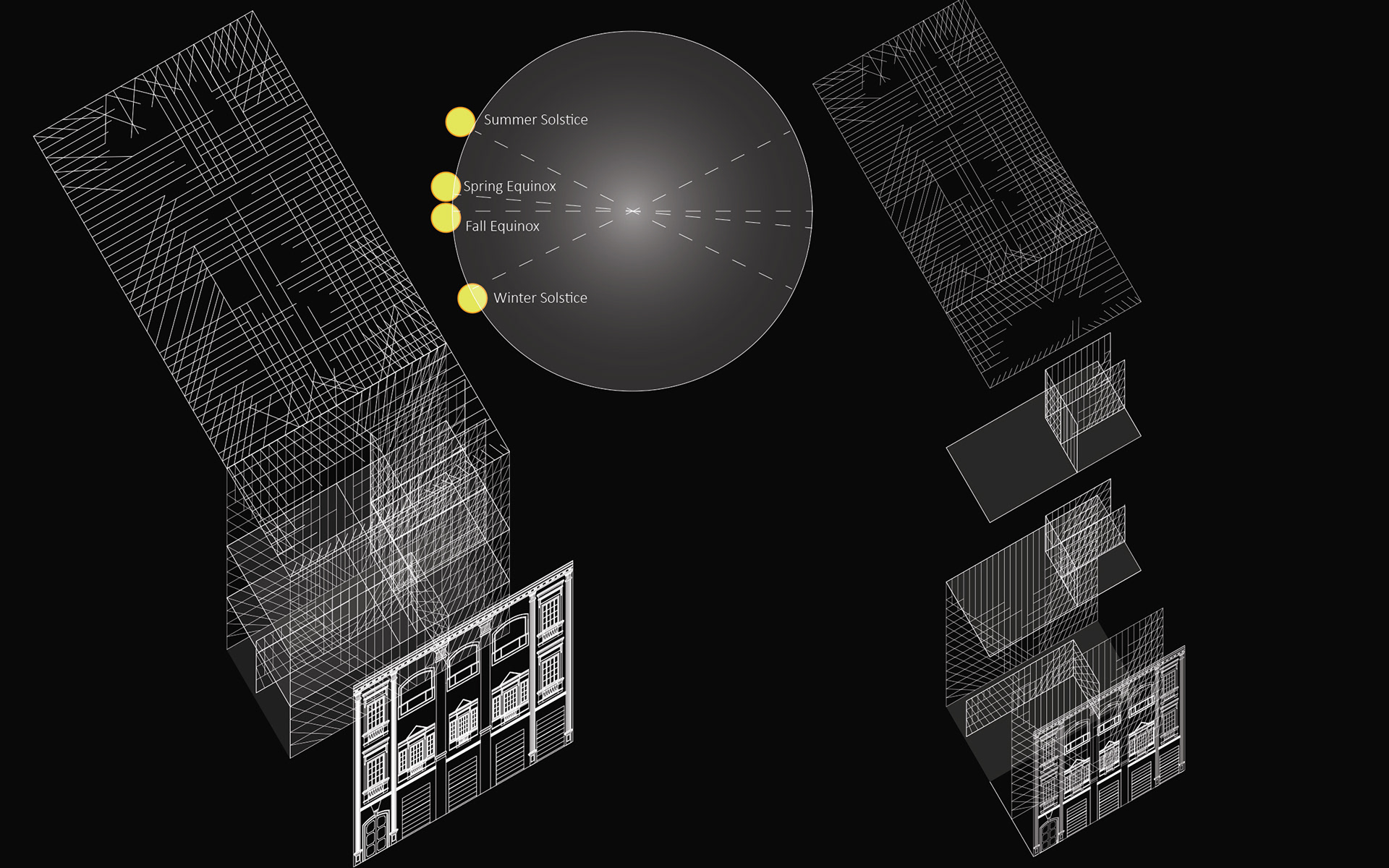
Building Program
My building is a primary school for children, where I have restored the site by adding program. However, preserving the facade within itself as is, to remind the kids of their cultural history, the adversity of colonization and to understand what it feels like to be colonized. As they enter the building, they are engulfed by light i.e. the light the structure holds within itself as it no longer exists in the shadows of the past. It remains true to what is now the future.
The rooms exist with hollow openings (created from the projections of exterior lattice shadows). These openings provide opportunities for creativity. How does one fill those gaps? How does one make this their own? That is the kind of learning this institute promotes. The process of learning while creating one's own identity. The students attend class while moving through the light and see the shapes change while the day goes by. They don't need a clock, the natural light from the lattices functions as a sun dial. Allowing them to move from space to space, in pursuit of the light.
